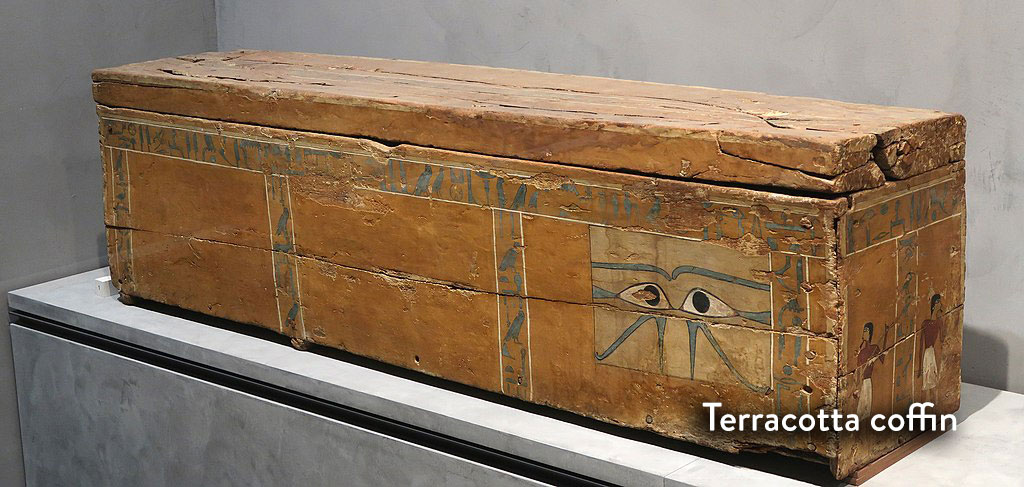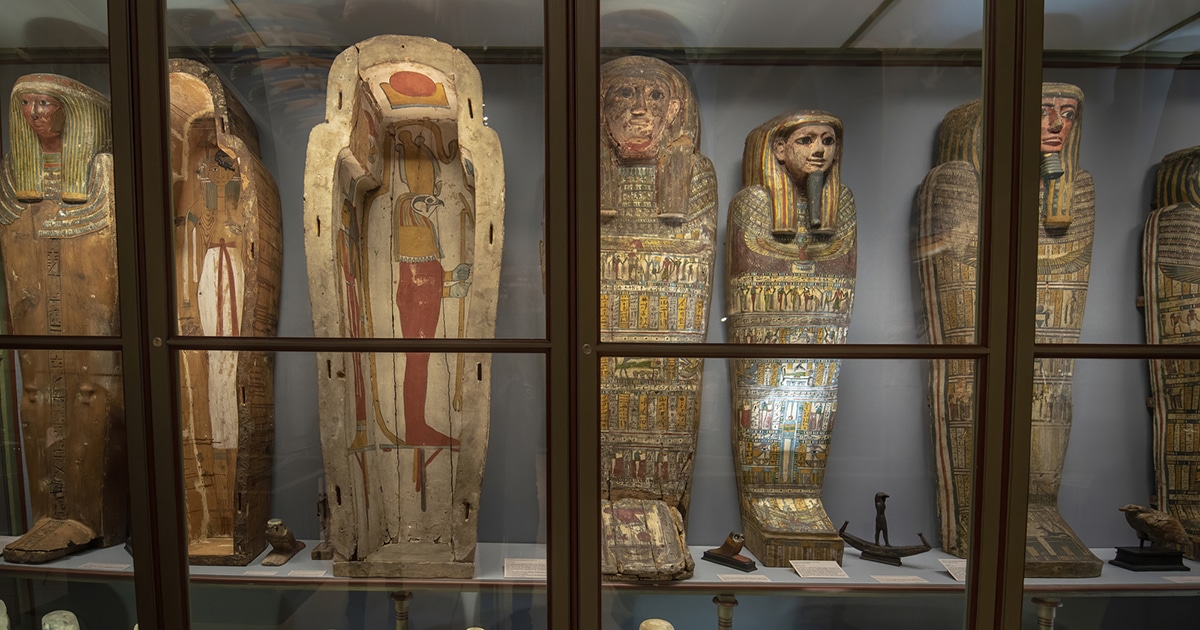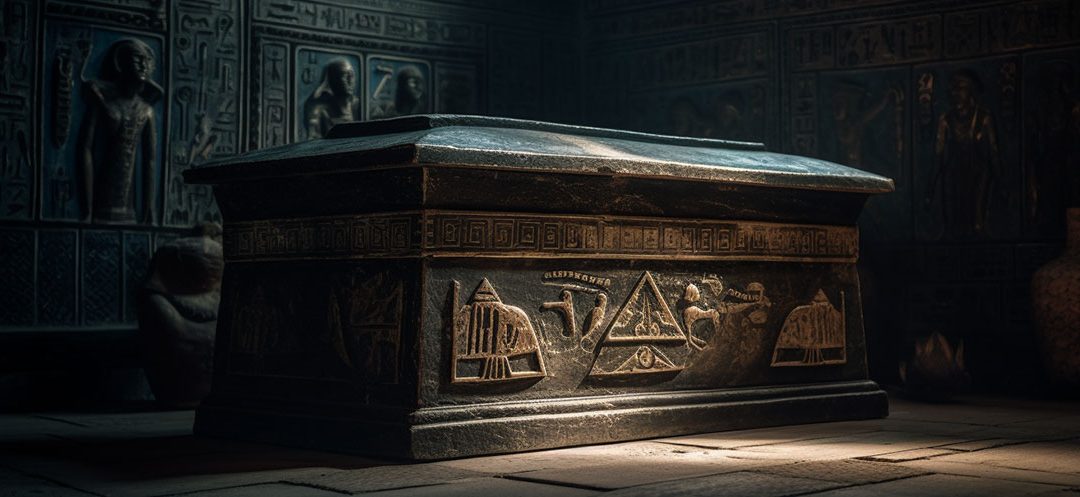Ancient Egyptian coffins, also known as sarcophagi, were elaborate and ornate burial containers used to hold the bodies of the deceased. These coffins played an important role in Egyptian funerary customs and were a symbol of the wealth and status of the person they held.

The earliest Egyptian coffins were simple rectangular boxes made from wood or clay, with the body of the deceased wrapped in linen and placed inside. However, over time, coffins became more elaborate and ornate, reflecting the religious beliefs and societal norms of the time.
During the Old Kingdom period (2686-2181 BCE), coffins were made from wood and were often rectangular in shape. The coffins were covered in a layer of plaster, which was then painted with images of the deceased, as well as scenes from their life and religious texts.
In the Middle Kingdom period (2055-1650 BCE), the use of sarcophagi became more common. These coffins were often made from limestone or other types of stone, and were more ornately decorated than earlier coffins. The coffins were often carved with intricate designs and hieroglyphics, which were believed to help the deceased on their journey to the afterlife.
During the New Kingdom period (1550-1070 BCE), the use of sarcophagi became even more elaborate. Coffins were made from materials such as gold and silver, and were often covered in precious jewels and other decorations. The coffins were typically shaped to resemble the deceased, with a detailed likeness of the person’s face and body carved into the lid.

In addition to their ornate appearance, Egyptian coffins were also designed to protect the body of the deceased and to facilitate the journey to the afterlife. The coffins were often inscribed with spells and incantations, which were believed to help the deceased navigate the dangers of the underworld and to reach the afterlife.
Today, ancient Egyptian coffins are admired for their beauty and craftsmanship, and are an important part of the cultural heritage of Egypt. They provide insight into the religious beliefs and societal norms of ancient Egyptian civilization, and continue to fascinate and intrigue people around the world.


